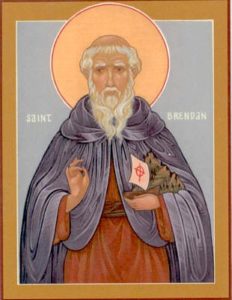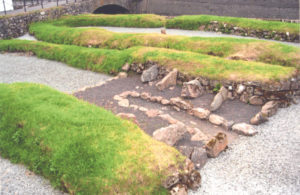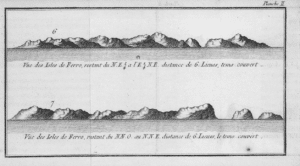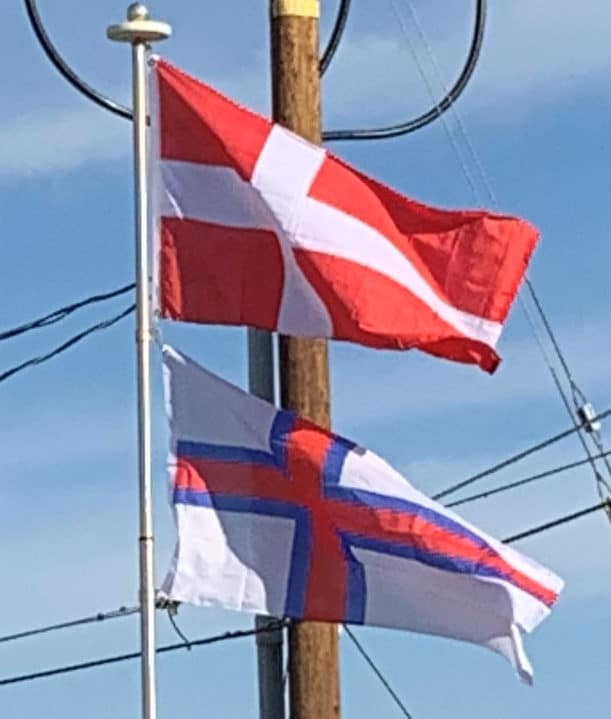A Latin account of a voyage made by Brendan, an Irish monastic saint who lived around 484–578, includes a description of insulae (islands) resembling the Faroe Islands. This association, however, is far from conclusive in its description.

Dicuil, an Irish monk of the early nineth century, wrote a more definite account. In his geographical work De mensura orbis terrae he claimed he had reliable information of heremitae ex nostra Scotia (“hermits from our land of Ireland/Scotland”) who had lived on the northerly islands of Britain for almost a hundred years until the arrival of Norse pirates.
Norsemen settled the islands c. 800, bringing Old West Norse, which evolved into the modern Faroese language. According to Icelandic sagas such as Færeyjar Saga, one of the best known men in the island was Tróndur í Gøtu, a descendant of Scandinavian chiefs who had settled in Dublin, Ireland. Tróndur led the battle against Sigmund Brestursson, the Norwegian monarchy and the Norwegian church.
The Norse and Norse–Gael settlers probably did not come directly from Scandinavia, but rather from Norse communities surrounding the Irish Sea, Northern Isles, and Outer Hebrides of Scotland, including the Shetland and Orkney islands. A traditional name for the islands in Irish, Na Scigirí, possibly refers to the (Eyja-)Skeggjar “(Island-)Beards”, a nickname given to island dwellers.

According to the Færeyinga saga, more emigrants left Norway who did not approve of the monarchy of Harald Fairhair (ruled c. 872 to 930). These people settled the Faroes around the end of the nineth century. Early in the eleventh century, Sigmundur Brestisson (961–1005) – whose clan had flourished in the southern islands before invaders from the northern islands almost exterminated it – escaped to Norway. He was sent back to take possession of the islands for Olaf Tryggvason, King of Norway from 995 to 1000. Sigmundur introduced Christianity, forcing Tróndur í Gøtu to convert or face beheading and, although Sigmundur was subsequently murdered, Norwegian taxation was upheld. Norwegian control of the Faroes continued until 1814, although, when the Kingdom of Norway (872–1397) entered the Kalmar Union with Denmark, it gradually resulted in Danish control of the islands. The Reformation with Protestant Evangelical Lutheranism and Reformed reached the Faroes in 1538. When the union between Denmark and Norway dissolved as a result of the Treaty of Kiel in 1814, Denmark retained possession of the Faroe Islands; Norway itself was joined in a union with Sweden.

Following the turmoil caused by the Napoleonic Wars (1803-1815) in 1816, the Faroe Islands became a county in the Danish Kingdom.
As part of Mercantilism, Denmark maintained a monopoly over trade with the Faroe Islands and forbade their inhabitants trading with others (e.g. the geographically close Britain). The trade monopoly in the Faroe Islands was abolished in 1856, after which the area developed as a modern fishing nation with its own fishing fleet. The national awakening from 1888 initially arose from a struggle to maintain the Faroese language and was thus culturally oriented, but after 1906 it became more political with the foundation of political parties of the Faroe Islands.
